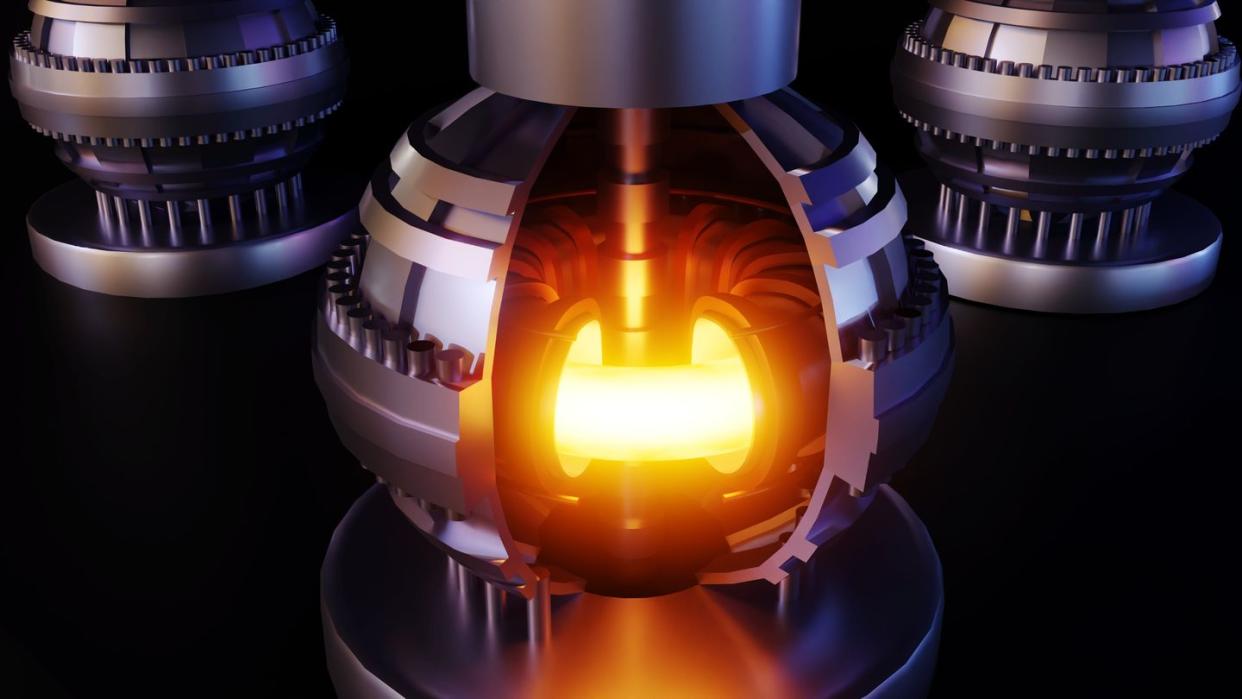Scientists May Have Tamed Fusion’s #1 Nemesis

"Hearst Magazines and Yahoo may earn commission or revenue on some items through these links."
The biggest problem at the heart of nuclear fusion is how to contain ultra-hot plasma for long enough to sustain energy-producing reactions.
One of the big hurdles for containing plasma is eliminating “tearing mode”—instabilities where magnetic field lines containing plasma break.
Now, researchers from Princeton University and the Princeton Plasma Physics Laboratory (PPPL) have trained an AI to notice these “tearing mode” plasma disruptions before they happen and keep the fusion reaction stable.
Illuminating businesses and homes with the star-sustaining power of fusion will be one of the greatest engineering challenges in human history. In order to recreate the energy-generating physics at the center of our Sun—which uses a lot of gravity to squeeze atoms together—reactors on Earth have to compensate for this lack of mass with an immense increase in heat.
At around 100 million degrees Celsius, light nuclei in the form of an electron soup known as plasma can overcome strong electric repulsion and fuse via quantum tunneling. While that’s all well and good, there’s just one pretty big problem—containing that ultra-hot plasma in the first place. That’s because plasma has a tendency to escape the magnetic fields containing it within reactors, which immediately spells the end of the fusion reaction. But scientists from Princeton, as well as the Princeton Plasma Physics Laboratory (PPPL), are employing AI to avoid these plasma mishaps and hopefully keep future fusion reactions from this particular form of self-sabotage.
Using the U.S.’s DIII-D experimental fusion reactor in San Diego, researchers demonstrated that their AI model trained on experimental data could detect what are known as “tearing mode” instabilities—a type of plasma disruption when plasma-containing magnetic field lines break—some 300 milliseconds in advance. Although that’s not enough time for humans to react to an instability, AI can readily change parameters to avoid the tear, and thus keep the reaction stable. The results of the work were published last week in the journal Nature.
“Tearing mode instabilities are one of the major causes of plasma disruption, and they will become even more prominent as we try to run fusion reactions at the high powers required to produce enough energy,” first author Jaemin Seo, a professor of physics at Chung-Ang University in South Korea who performed the work as a postdoctoral researcher at Princeton, said in a press statement. “Previous studies have generally focused on either suppressing or mitigating the effects of these tearing instabilities after they occur in the plasma, but our approach allows us to predict and avoid those instabilities before they ever appear.”
Teaching AI to control a fusion reaction is remarkably similar to how other AI models are trained for complicated tasks—lots of real-world data and ultra-quick pattern recognition. This AI model used a “reinforcement learning algorithm” that allowed the program to work out best containment methods via trial and error within a simulated environment. Eventually, the program learned to achieve high power output without the “punishment” of instability.
Co-author Azarakhsh Jalalvand, also part of the Princeton group, compares training the AI model to learning to fly an airplane, saying a controller needs lots of time on an intricate simulator before “they’ve learned enough to try out the real thing.”
Now that the AI has passed the real-world test with flying colors, the researchers say they need more data on the AI’s performance at the DIII-D reactor. And if all goes well, the team could begin training the program to recognize other fusion instabilities as well.
But containing plasma in real-time is only one piece of the fusion puzzle. Engineers, for example, still need to develop new materials capable of withstanding the immense heat of fusion for not just minutes, hours, or days, but years if the technology has any hope of one day powering homes across the world.
Fusion could very well be the biggest engineering feat in human history—and it might just be the biggest in AI history as well.
You Might Also Like

